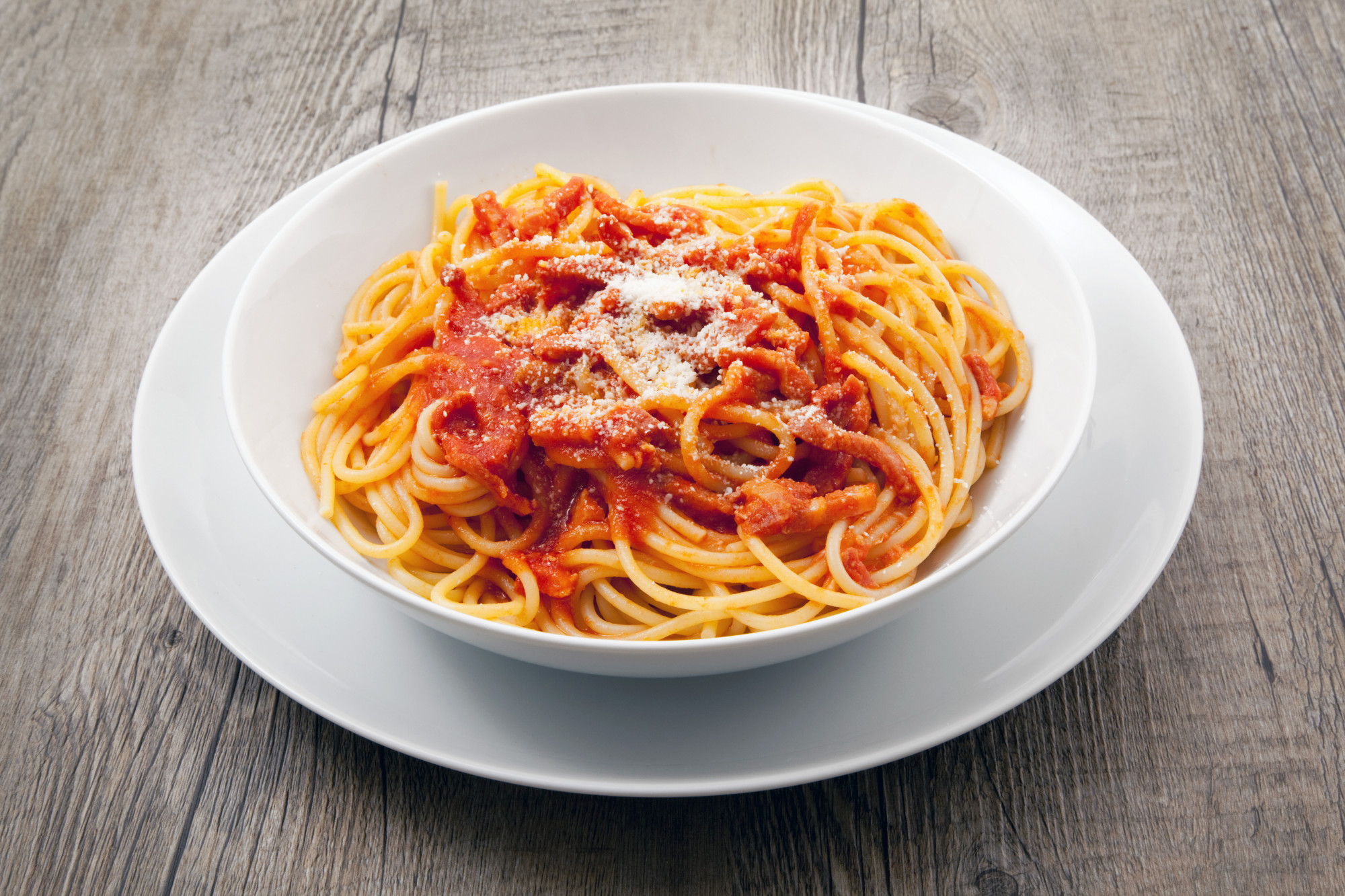While the pasta sauce amatriciana is said to have its roots in Amatrice, it is now mostly a Roman sauce. Black pepper, red pepper flakes, tomato, guanciale (cured pork jowl), Pecorino Romano, and white wine are used in its preparation.
Years ago during my college days, when I was working as a sous-chef in a Tuscan restaurant, I developed a serious love for amatriciana.
Amatriciana should be made with guanciale, or cured pork jowl. Many home cooks who reside outside of Italy, in regions where pancetta, the cured belly, is less difficult to get, have a challenge as a result. So how significant is the guanciale in this case?
I’ve already addressed this issue with another pasta dish from Rome, the carbonara. I discovered slight variations between guanciale and pancetta in carbonara and came to the conclusion that either is an excellent option.
However, while making amatriciana, I prefer to leave the pork in larger bits as opposed to the carbonara recipe where I sliced it. Furthermore, the sauces are distinct: The former is tomato-based, while the later is egg-based. These distinctions appear to be significant. in particular, size, I suppose. The extra lean muscle in pancetta is more apparent when the pork is chopped into larger pieces, firming up as it cooks and generating a tougher feel. A far more delicate bite can still be observed in fatty guanciale. The tomato sauce and the creamy carbonara both lacked the warming spice flavor of the guanciale.
The basic conclusion is that good pancetta will work just as well as good guanciale.
Next up is the debate over whether or not amatriciana sauce should contain aromatics like garlic and onion.
Then, as per usual, I conducted some experiments by cooking three batches of amatriciana: one with no onion or garlic, one with thinly sliced onion and garlic cooked with the guanciale, and one in which I lightly browned large pieces of onion and garlic in the oil before discarding them and adding the guanciale.
I discovered that when garlic and onion are cooked into the sauce, they offer a sweet, fragrant edge that swiftly takes over.
Ingredients
- 1 tablespoon (15ml) extra-virgin olive oil
- 170g guanciale, cut into slices about 1/8 inch thick and then into 3/4- by 1/4-inch strips
- Pinch red pepper flakes
- 1/4 cup (60ml) dry white wine
- 1 (794g) can whole peeled tomatoes, roughly crushed by hand
- Salt and freshly ground black pepper
- 450g dried bucatini pasta
- 30g grated Pecorino Romano cheese, plus more for serving
Directions
- Heat the olive oil in a large skillet over medium-high heat until it shimmers. Guanciale and red pepper flakes should be added, and they should be cooked for about 5 minutes while stirring. Add wine and simmer for three minutes, scraping up any browned bits from the pan’s bottom as you go.
- Then add the tomatoes and simmer. Add pepper and salt to taste.
- In the meantime, cook the pasta in salted water until it is just shy of al dente, about 1 minute less than the package directions. Transfer the pasta and 1/4 cup pasta cooking water to the sauce using tongs. Transfer the pasta, along with 1/4 cup of the cooking water, to the sauce using tongs. Stirring and tossing often over high heat, cook until pasta is al dente and sauce has thickened and starts to cover noodles. Remove from heat, quickly whisk in cheese. Add additional salt and pepper to taste. Serve immediately, adding additional cheese to the table.
